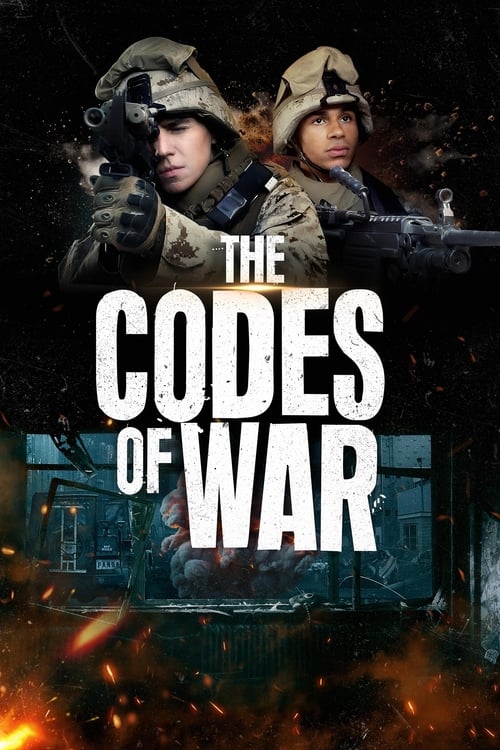
Ask Your Own Question
What is the plot?
Will Radford begins his day inside the Department of Homeland Security's secure operations center, watching the world through a system his agency runs that can track virtually anyone on the planet. He uses the global surveillance network to sift live feeds, cell pings and camera streams, and he checks the routines of his own family as methodically as he monitors foreign persons of interest. He watches his daughter Faith in her small apartment; she is pregnant and trying to sleep, and he watches her doctor's calls and her visits with a midwife. He watches his son Dave in a cramped room filled with computers and tangled cords; Dave moves quickly across keyboards, attempting to break into networks, and Will observes that persistence with a mix of professional detachment and private guilt. That omnipresent oversight strains Will's relationship with Faith and with Dave: Faith bristles at being constantly tracked, and Dave resents his father's control. Will believes he is protecting them, but their distance grows.
On an otherwise ordinary afternoon, Will is called to assist FBI agents who are hunting a prolific hacker known only by the alias Disruptor. The agents brief him in a windowless conference room; the atmosphere is tense but procedural. Will accesses the surveillance grid to help trace Disruptor's activity, routing through camera networks and triangulating signals. While the federal teams pursue the cyber trail, a series of bright streaks tear across the sky. Meteors begin striking the planet in rapid succession, hitting cities and open countryside alike. The first impacts arrive as shocking flashes and concussive detonations, and then strange, angular objects thrust up from the impact sites.
The objects are not meteor fragments but machines--towers and armored, multi-legged constructs that extrude insect-like pods and mechanized drones. They leave smoldering impact craters and then begin attacking people. In the surveillance feeds, Will and Sandra, a colleague at NASA who has been analyzing the trajectories, watch these devices move with mechanical intent: they do not behave like natural debris. Sandra brings orbital observations and radar analysis to the room and, after cataloguing the machines' designs and their energy signatures, she and Will conclude what other analysts begin to suspect--a coordinated alien invasion.
As the machines spread, they move toward urban infrastructure. Will uses the DHS system to follow one of the constructs as it traverses a city toward a nearby data center; he notices that the alien apparatuses send out small insectoid creatures that slip into buildings, moving with uncanny speed to server rooms and fiber-optic hubs. The tiny machines pry open cabinets, snap cables, and connect to data cores. Will watches data flows spike in the feeds: the aliens are harvesting information. He recognizes the pattern and alerts field teams, but military units that rush to engage the behemoth devices find their conventional weapons ineffective. Tanks blow away pieces of armor; missiles leave scorch marks; gunfire pings harmlessly off plating as the constructs continue to operate and send out swarms to feed on networks.
While the capital organizes a response, Will focuses on his children. He calls his son and his daughter in rapid succession; Dave answers with clipped impatience and Faith's voice is shaky, strained. Military convoys mobilize and airspace is restricted. Will gives practical instructions and, relying on remote feeds, guides Faith and Dave through a short, dangerous escape when a construction-sized machine rolls into their neighborhood. He directs them across alleys and into a service elevator shaft, monitoring the machine's sweep path as it surveys the block with scanning lights. At one intersection the creature launches a spider-like drone that drops into a storefront, tearing the glass and creating chaos, but Faith and Dave slip past and reach a safer corridor by following Will's directions. They escape the first wave, shaken and fearful; Will keeps them tethered through the DHS network while also preparing for a briefing in the highest circles of government.
The president convenes an emergency meeting inside the Situation Room. Secretary of Defense Walter Crystal, DHS Director Donald Briggs and other senior officials crowd the table and exchange tactical briefings. The president authorizes a full military response, and allied governments announce similar mobilizations. Will briefs the group on the aliens' behavior: the external machines establish perimeters around global data centers and release the insect-like harvesters into the interiors of those facilities. He emphasizes that the alien devices feed not on flesh but on information; they siphon data and power, and the insectoid units act as interfaces with human infrastructure. Will's message alarms the room, because the machines' survival and expansion appear to be tied to access to human data. Troops confront the constructs at multiple data center sites around the world; in each case the humans' assaults fail. Tanks and aircraft attempt to destroy the towers, but the devices are remote and adaptive, and they counter with instruments that disable weapon systems and send swarms to clear the buildings.
As chaos grows, Will follows a separate thread of evidence. He discovers encrypted traces within the alien systems that intersect with domestic surveillance protocols, and through his access he starts to uncover classified files. He finds documentation of an internal DHS project codenamed Goliath--a global system of surveillance that had been operational, and that had recorded an earlier arrival of similar alien ships. The files contain warnings: the aliens are attracted to data flows and can feed on information; activating a program like Goliath could draw them. Will is forced to confront the fact that someone within his department had activated Goliath despite such warnings. He confronts Director Briggs in a corridor illuminated by sparking emergency lights. Briggs stands defiant, insisting that Goliath was necessary to keep the nation secure and that its activation was justified. When Will presses for answers and the evidence of the prior contact, Briggs slams the facility's administrative controls and blocks Will's access to the DHS network, locking him out of critical systems at a moment when every second matters.
During these days of siege and counterattack, Will learns that Disruptor is not a faceless adversary but his own son. Dave admits to having assumed the alias and to having used the moniker to expose files tied to Goliath. In a cramped back room under the hum of servers, Dave connects Will to a cache of classified documentation that proves the earlier alien visitation was known to officials and that they had been warned that a global surveillance platform would act as a beacon. Will reels as he reads diagrams that tie Goliath's operation parameters to the locations where the alien constructs now cluster. He confronts Briggs again with the newly revealed material, and Briggs replies that activating Goliath had been a desperate choice made under conflicting intelligence and that, in his view, the prior data had justified control. Briggs then uses his authority to sever Will's further access and to seal certain archives.
Cut off from his official channels, Will does not yield. He and Dave assemble a small group of freelance hackers who still trust the younger Radford and who begin to craft a countermeasure designed to disrupt the aliens' link to Goliath. They work in a converted loft lit by monitors, tapping underground routing and exploiting backdoors in the DHS system. Together they develop a virus meant to corrupt the alien interface code and cut the creatures' ability to harvest data. Will infiltrates via the few nodes to which he still has access and, relying on Dave's clandestine skills, plants the malicious payload into remote endpoints the attackers identified in the classified files.
The virus executes in the field but does not produce the hoped-for result. Instead of severing the alien link, the payload alerts the invaders to new sources of activity. The machines respond with lethal efficiency. They track the unusual traffic patterns back to the routers and addresses associated with Dave's hacker cell. Small, precise attack teams of insectoid units are dispatched by the alien constructs; they burrow through firewalls and slip through ports, then manifest physically in the world by entering the apartments and safe houses of the hackers. In one apartment a pair of hackers are killed when a swarm of the insect-like creatures breaches the window and descends on them, snapping limbs and tearing through flesh with mechanized appendages; in another safe house a young woman is dragged beneath heavy machinery that rips cables from racks, and she is crushed as the room collapses under the invaders' instruments. Will watches each feed and listens to the last frantic transmissions as colleagues of Dave scream for help and then fall silent. Most of Dave's fellow hackers are located by the alien machines and killed in these rapid, brutal assaults; the invaders leave few survivors in the hacker network.
As the losses mount, military leaders fear that the alien priority targets will include Goliath itself because of its global connectivity; they decide that the only fail-safe is to prevent the aliens from accessing the DHS data core. Military planners set a timetable to bomb the DHS headquarters, targeting the secure subterranean bunker that physically houses Goliath. They plan to flatten the facility and destroy the system entirely rather than risk the aliens using it to become more powerful. The order is cold and final: if the invaders cannot be dislodged, the system that could attract them must be forcibly eliminated.
Will refuses to accept destruction as the only option. He remembers his daughter Faith's work: she had been researching a genetic algorithm and a program nicknamed Cannibal--an experimental code designed to attack malignant cells in a novel way. Faith had conceived the algorithm as a way for certain code modules to recognize and eradicate malignant data structures; Dave and a few hackers had dabbled with the algorithm and adapted parts of it for digital use. When Faith's boyfriend, Mark, an Amazon delivery driver, arrives with a package, Will intercepts a small, innocuous flash drive that Mark had carried for Faith. The drive contains a refined variant of the Cannibal code, one that Faith had been testing for cancer research but which Dave had adapted into a potential digital pathogen targeting the alien interfaces.
Will takes the drive and heads into the DHS bunker at night, escorted by a skeleton security detail that trusts his knowledge even as they keep wary eyes on him. He moves through corridors lined with armored doors and biometric scanners; he bypasses certain lockdowns by invoking old credentials and by persuading guards who remember him. Inside the server chamber, the Goliath mainframe hums like a sleeping beast, its racks glowing with status lights and redundant cooling systems. Will physically inserts the flash drive into an authorized terminal, and he and Dave watch code scroll across the monitors as the Cannibal-derived program loads and begins to run.
The code behaves unpredictably at first; the alien systems push back, rerouting data streams and initiating fail-safes. For minutes that feel like hours, Will and Dave execute manual overrides, roll back subroutines, and apply patches to the Cannibal variant to make it compatible with the aliens' proprietary protocols. In a final sequence, the program replicates through the Goliath interfaces and begins to disrupt the alien constructs' capacity to interpret and siphon human data. The servers' lights flicker and alarms blare as the mainframe forces a controlled shutdown of specific services. On the surveillance feeds around the world, the alien machines that have been feeding on data falter: their insectoid harvesters twitch, their link pulses fade, and some of the constructs shut down and power down their systems, falling inert to the ground. Those that had been actively transmitting data streams spike once and then go dead.
Outside the bunker, the first volley of planned bombs is already minutes from the target coordinates, but when the military receives verification that Goliath is offline and that the alien devices have become inert, commanders call off the strike. Bombers are recalled from final approach. The chain of command reverses the order to destroy the DHS facility, and a wave of relief washes through the operations rooms as men and women who had been preparing to set charges breathe and lower their hands.
The invaders do not all die in an instant; many of the small insectoid units collapse without their central directives, becoming useless metal carcasses. The larger machines stand motionless in plazas and outside data centers, inert hulks that resemble the dead wreckage of an invasion. First responders and military personnel cautiously approach, secure perimeters, and begin to dismantle the alien devices. Scientists and technicians comb through recovered hardware, removing components and logging data for study. Will stays in the bunker to ensure that the shutdown holds and to answer investigators. He watches footage of crews overturning the alien harvesters and pries apart the interfaces to see what the invaders used to connect to human networks.
In the aftermath, Will and Dave receive public attention as architects of the counterattack; they are hailed as heroes by press and officials who come to the facility. Authorities arrest Director Donald Briggs for authorizing Goliath's activation over objections and for concealing critical intelligence that could have altered the response strategy. Briggs is processed by federal agents and taken into custody; he goes through detention protocols and later faces charges for his decisions. He protests his actions during interrogation, insisting his choices were necessary; nevertheless, investigators charge him with misconduct for obscuring the true risks. Secretary of Defense Walter Crystal oversees the transition of command and offers Will a role: Crystal proposes that Will lead a reconstituted surveillance program that would continue to monitor threats but with safeguards to limit invasive oversight and to respect personal privacy to an extent. Crystal frames the offer as a way to rebuild trust and to prevent future unintended consequences.
Faith's work also receives official recognition. Her Cannibal algorithm, the DNA-based research she had pursued, becomes the basis of the variant that disabled the alien data nexus. Scientists credit her contributions and list her as the source of the genetic code that was adapted for the digital solution--her work becomes part of the narrative of how humanity fought back. Faith attends debriefings and meets with research teams who seek to formalize her algorithm into a tool for medical research as well as cybersecurity studies. Mark, the delivery driver who provided the flash drive, is publicly thanked for facilitating the delivery that allowed the code to reach the bunker in time.
Will considers Crystal's offer in the quiet that follows the crisis. He walks the line between gratitude for the opportunity to shape a new program and the weight of what he helped expose. Standing before Crystal in a temporary command tent, he declines the leadership post. He tells Crystal he will not run another intrusive system; instead, he delivers a terse line--he tells Crystal, "Now, I'm watching you"--a precise, ironic inversion of his previous surveillance posture that signals his mistrust of unchecked power. He refuses to take on an institutional role that could replicate the mistakes that drew the aliens in the first place.
The federal government orchestrates a public narrative of success: Will and Dave are commended, Briggs faces prosecution, Faith's research is credited with providing the crucial mechanism for disabling the invaders, and debris from the alien machines is catalogued for study. In small, private moments, Will seeks forgiveness from his children. He visits Faith in person for the first time without the mediation of a screen; he sits in her kitchen and apologizes for watching her so closely, acknowledging the damage his constant surveillance caused. Faith receives him with a cautious warmth; she is still pregnant, and the baby shower is scheduled for the coming weekend. Dave is quieter in the aftermath; he spends nights repairing networks and coordinating with cybersecurity teams to close the vulnerabilities he once exploited.
The final scene shows Will walking toward Faith's baby shower in a downtown community hall, carrying a modest gift and wearing a jacket dusted with the grit of recent days. Families gather, and guests smile when they see him enter; Faith moves toward him with a small, guarded smile. They exchange a brief, sincere embrace. Behind them, the world begins its slow work of recovery: data centers that had been charred are being rebuilt; military units clear abandoned alien equipment; scientists open captured modules under careful supervision. The alien machines remain deactivated, their threat neutralized by the Cannibal-derived code running through Goliath's offline core. Will leaves the public security of the federal command center and steps into the quiet domestic space of his daughter's celebration, closing a chapter on a crisis born of data and human hubris and ending with a father returning to family as recovery efforts continue around them.
What is the ending?
The ending of The Codes of War (2025) portrays a tense and tragic evacuation under fire in the middle of the Battle of Ramadi. After a fierce fight in a compound, the Navy SEAL platoon suffers casualties during extraction, including the death of one translator and injuries to several soldiers, emphasizing the brutal reality and human cost of modern warfare.
Expanded narrative of the ending scene by scene:
The film's climax unfolds during a chaotic and dark night inside a seized house in Ramadi. The Navy SEAL platoon Alpha One has taken control of a local residence to provide overwatch for an ongoing US Marines operation. They discover the building's upper floor is a separate apartment, so they breach a wall to gain entry. The translators Farid and Noor instruct the civilians on both floors to stay put for their safety.
JTAC communications officer Ray Mendoza coordinates air support while sniper Elliot Miller watches a bustling market from a window across the street. Suddenly, enemy forces broadcast a call to arms, and hostile activity spikes. The air support pulls away, leaving the SEALs vulnerable. A grenade is then hurled into the sniper's room, wounding Elliot and causing concussions to Tommy and Frank.
With casualties mounting, the team calls in a CASEVAC to evacuate Elliot. As they prepare to withdraw, they arm Claymore mines and arm themselves for a fighting retreat. Through thick smoke, the translators lead Elliot, Sam, Tommy, and Erik to the waiting M2 Bradley armored vehicle.
As the ramp of the Bradley lowers and soldiers begin to board, an improvised explosive device (IED) detonates, killing the translator Farid instantly and wounding others including Elliot and Sam. The vehicle sustains damage but manages to pull away from the deadly ambush.
The film closes on this harrowing withdrawal, illustrating the unpredictable dangers of urban warfare and the sacrifices of all involved -- soldiers and translators alike. The final moments capture the exhaustion, loss, and resilience of the platoon, conveying a stark, unvarnished reality of combat without heroics or glorification.
Is there a post-credit scene?
As of my last update in October 2023, there is no specific information available regarding a post-credit scene for the movie "The Codes of War," produced in 2025. Since the film has not been released yet, details about its content, including any post-credit scenes, remain undisclosed. For accurate and detailed information, it would be best to check official sources or reviews after the film's release.
What is the background of the two U.S. Marines featured in The Codes of War?
The two U.S. Marines in the story are based on the true story of LCpl. Jordan Haerter and Cpl. Jonathan Yale, who stand their ground to stop a suicide truck bomb in a critical six-second moment.
How does the Navy Corpsman character struggle with his humanity in the film?
The Navy Corpsman in the film faces an internal conflict as he attempts to hold on to his humanity amidst the brutal realities of war, highlighting his ethical and emotional struggles.
What challenges does the World War II soldier face after being separated from his unit?
The World War II soldier, separated from his squad, is forced to question and re-evaluate his principles and code of conduct while trying to survive and make it back to his loved ones.
What role does the British SAS Commando team play in the story?
A British SAS Commando team captures a lone German soldier whose unit was mysteriously destroyed in the North African desert, which is part of the film's depiction of wartime events.
How are the themes of family, ethics, and honor portrayed through the characters' experiences?
The film portrays these themes through the true stories of the Marines' bravery, the Corpsman's moral struggle, and the WWII soldier's personal journey, each reflecting different aspects of family loyalty, ethical dilemmas, and honor in war.
Is this family friendly?
The movie titled The Codes of War (2025) is a modern war film that depicts intense, realistic combat situations involving military personnel. It is described as a visceral and gut-wrenching experience with highly realistic sound design and portrayal of the horrors of war. Based on available information, it is not family-friendly and is likely unsuitable for children or sensitive viewers.
Potentially objectionable or upsetting content includes:
- Intense and realistic war violence, including gunfire and explosions.
- Portrayal of psychological and emotional trauma related to combat and PTSD.
- Scenes of chaos, danger, and life-threatening situations experienced by military personnel.
- The film's tone is unrelenting and emotionally heavy, designed to immerse viewers in the brutal realities of warfare.
This film is recommended for mature audiences who can handle graphic war depictions and intense emotional content. It is explicitly noted as "not for the faint of heart" and may be disturbing, particularly for children or those sensitive to violence and war themes.
Does the dog die?
There is no information available regarding a movie titled The Codes of War produced in 2025. The search results mention a movie titled The Codes of War released in 2023, not 2025. Therefore, any information about a dog's fate in a 2025 movie with this title cannot be determined from the provided search results.






















